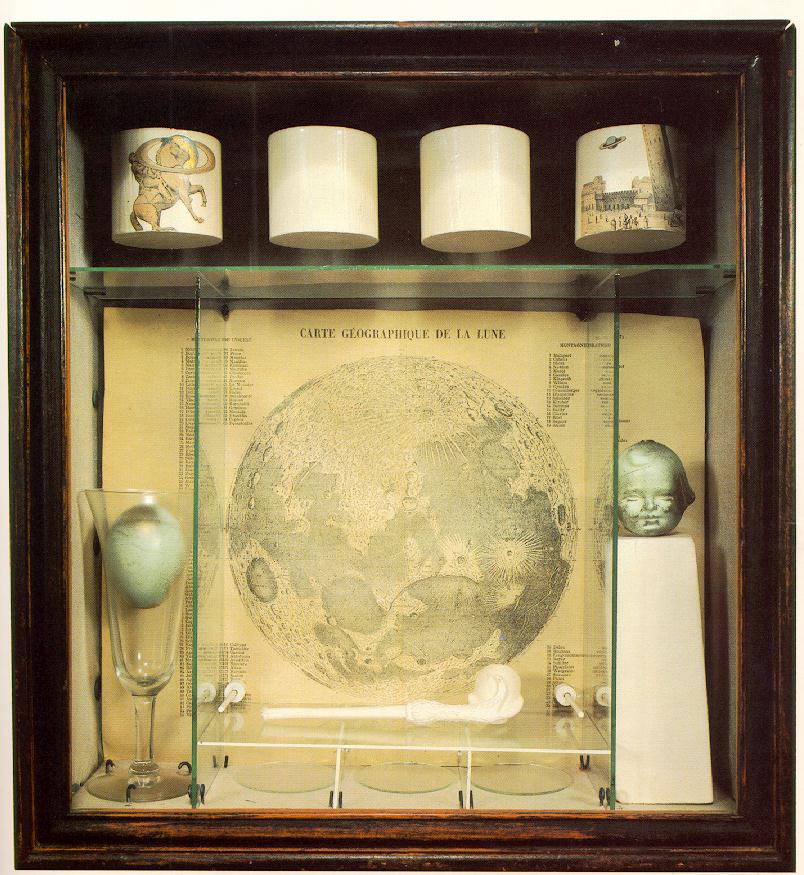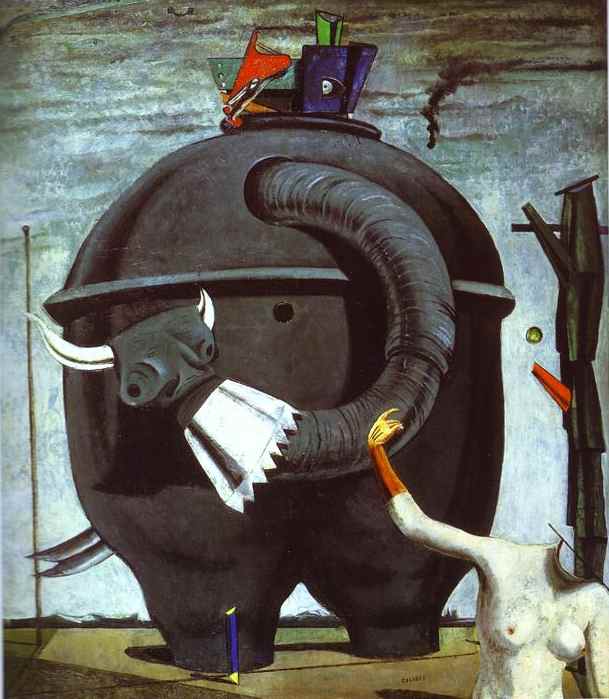Background Information
Born in Nyack, New York in 1903, Cornell was the oldest of four siblings. When he was thirteen his family became financially unstable as his father passed away due to Leukemia. Their family then relocated to Long Island where his mother balanced multiple jobs in order to support the family. During this time, Cornell enrolled at the Phillips Academy in Andover with the financial help of his father’s former employer. This was his only formal education as he did not attend college or receive formal art training. Furthermore, he became a cosmopolitan citizen as he sought out to watch many ballets and plays while maintaining a sales job on the side. Cornell and his family economically struggled their entire lives as they lived through the Great Depression. Cornell engaged himself in many jobs such as being a door-to-door salesman, the textile industry, and in a plant nursery. His artwork wasn’t a major source of income until his exhibition at the Charles Egan Gallery in 1949. Cornell’s personal life was rather uneventful as he came off as too eccentric to maintain a romantic relationship. His shy and reserved personality from a young age translated into an isolated adult life that was spent mostly caring for his handicapped younger brother.
Since an early age, he had a keen interest in the mechanics of assemblage. In his childhood years, he would buy books to cut out their picture and paste them onto his collages. Later, this love for collages transformed into his legacy as he created his famous shadow boxes which later inspired artists such as Andy Warhol and Robert Rauschenberg. His use of different visual concepts propelled the “Pop Art” movement forward. Cornell also experimented with filmmaking and made movies such as Rose Hobart in 1936 when the Surrealist movement piqued his interest.
Socio-economic and cultural contexts
As mentioned before, Cornell was poor throughout his early years. In the 1920s, he worked as a fabric salesman in order to support his family. In 1929, however, the Great Depression plagued the city. Not only did investors suffer from the stock market crash, but the average worker suffered from mass unemployment as well. At the time, there were approximately 50.7 million people in the workforce (“Unemployment Statistics”). Amongst the workforce, roughly 8 million, or 16%, were unemployed. Unfortunately, Cornell was one of the 16% who became unemployed and lost his job as a salesman in Whitman’s wool shop a few years after the depression began. Deciding to take a new turn, he became obsessed with the Julien Levy Art Gallery, where many Surrealist art were displayed. As he went there often, he occasionally met Surrealist artists whose works later became fundamental to his shadow boxes. The Surrealist Movement was first founded during World War I in Paris, originating from the Dada Movement. Like the Dada, Surrealism rejected reality and was known for its portrayal of society through irrational and juxtaposing elements. It was first popularized in the beginning of 1920. But by the mid 1920s, it spread rapidly across the globe, eventually reaching New York City. While Cornell was certainly influenced by this movement, he did not see himself as a Surrealist. However, many of his works embodied its core ideas.

Soap Bubble Set, 1936
In one of his famous shadow boxes, Soap Bubble Set, 1936, he successfully illustrated the juxtaposition evident in many Surrealist works. On the two sides of the box is a bird’s egg in a glass and a doll’s head. Right in the center is a clay pipe, with the background as a map of the moon. Finally, in the top portion of the box is a print of the Leaning Tower of Pisa. Cornell utilized the Surrealist juxtaposition perfectly as there is no clear relationship between these objects. Of course, there is a meaning to his works. In this particular shadow box, many writers have interpreted the piece as a family portrait (“The Art History”). Each object represents a member of his family. The clay pipe represents his father while the egg depicts his mother. The four rolls on top are Cornell and his 3 siblings.

The Elephant Celebes, 1921 by Max Ernst
To put this into perspective, an iconic painting by Max Ernst named The Elephant Celebes, 1921, considerably resembles Cornell’s Soap Bubble Set, 1936 . Unlike Ernst’s painting, Cornell’s style also embodies the assemblage technique, which is a collection, or assembly, of multiple objects which is then combined into a single piece of artwork. Yet, it is closely related to Ernst’s painting as they both express the irrationality and juxtaposition of Surrealist art. In both paintings, the overwhelming amount of unrelated objects displayed in the artwork makes it difficult for the audience to clearly interpret the meaning of the overall artwork. Ironically, it is exactly this unclear interpretation that makes this style clearly defined as art since art often has multiple interpretations that vary between different perspectives.
Seminar Themes
One of Cornell’s most famous pieces is known “Setting for a Fairy Tale” which is definitely a contrast when compared to his other works of art which involve chaotic placements of juxtaposed items. This neat little box seems to have been inspired by the theatre world as it is a replica of Jacques Androuet du Cerceau engraving from Paris. Furthermore, the clean black border of this piece gives the viewers the facade of a picture perfect landscape-once more evoking the stage like characteristic of a perfect setting. This piece of art connects to the seminar there of “What is art and its purpose?” This masterpiece of assemblage lets the mind wander to an unreal unreal idea of perfect that doesn’t exist. Everyone knows that nothing is perfect in life, however by creating this setting for a fairy tale-a story usually classified by happy endings- Cornell uses his work of art to give his audience a taste of the perfect world.
Another famous work of art by Cornell features one of the total six pharmacies he created throughout his lifetime. The seminar theme that connects to this piece is one of “Meaningfulness” as he can relate this piece back to his life. Constructed out of wood, glass, mirror, shells, and some feathers and coral, this simple work of art created in 1952 exemplifies medicine for the soul. As a devout Christian, Cornell was not allowed to take medicine so instead he created a pharmacy that would prescribe things to his likening such as colored sand representing the joys of life, newspaper clippings representing literature and knowledge and maps to indicate travel.
Works Cited
“Joseph Cornell,” The Art Story.www.theartstory.org/artist-cornell-joseph.htm. Accessed
12 November 2017.
“Joseph Cornell,” Guggenheim. guggenheim.org/artwork/artist/joseph-cornell. Accessed 12
November 2017.
“Surrealism,” The Art Story.www.theartstory.org/movement-surrealism.htm. Accessed
12 November 2017.
“Unemployment Statistics during the Great Depression,” United States History.
www.u-s-history.com/pages/h1528.html. Accessed 12 November 2017.


December 19, 2017 at 4:13 am
Before this course, I had admittedly not known about Joseph Cornell and his artwork, but I can certainly see now why his contributions of “assembled” art to the development of non-traditional art forms are worth analyzing and remembering.
I think it’s interesting to consider that the “assembled” nature of the shadowboxes Cornell is known for may be a nod to his upbringing and early life in poverty. By grouping a set of inexpensive, everyday items (such as in his 1936 work Soap Bubble Set,) and declaring the collection to be “art,” Cornell not only makes a statement that a work of art can be created without the artist lifting a paintbrush or a pencil, but also demonstrates that expensive materials, mediums, or motifs are not essential to the creation of art. He is also an example of an artist who was able to change society’s definition of what constitutes a work of art even without a formal arts education.
Viewing Cornell’s work reminded me once again that my preconceived notion of a the necessity of the creation of a new “image” through drawing, painting, or sculpture for this image to be “art” is erroneous. I think there is certainly something to be said for grouping items we would normally not give second thought to, such as a pipe, and asking viewers to view this collection, as a whole, as a meaningful work of art.